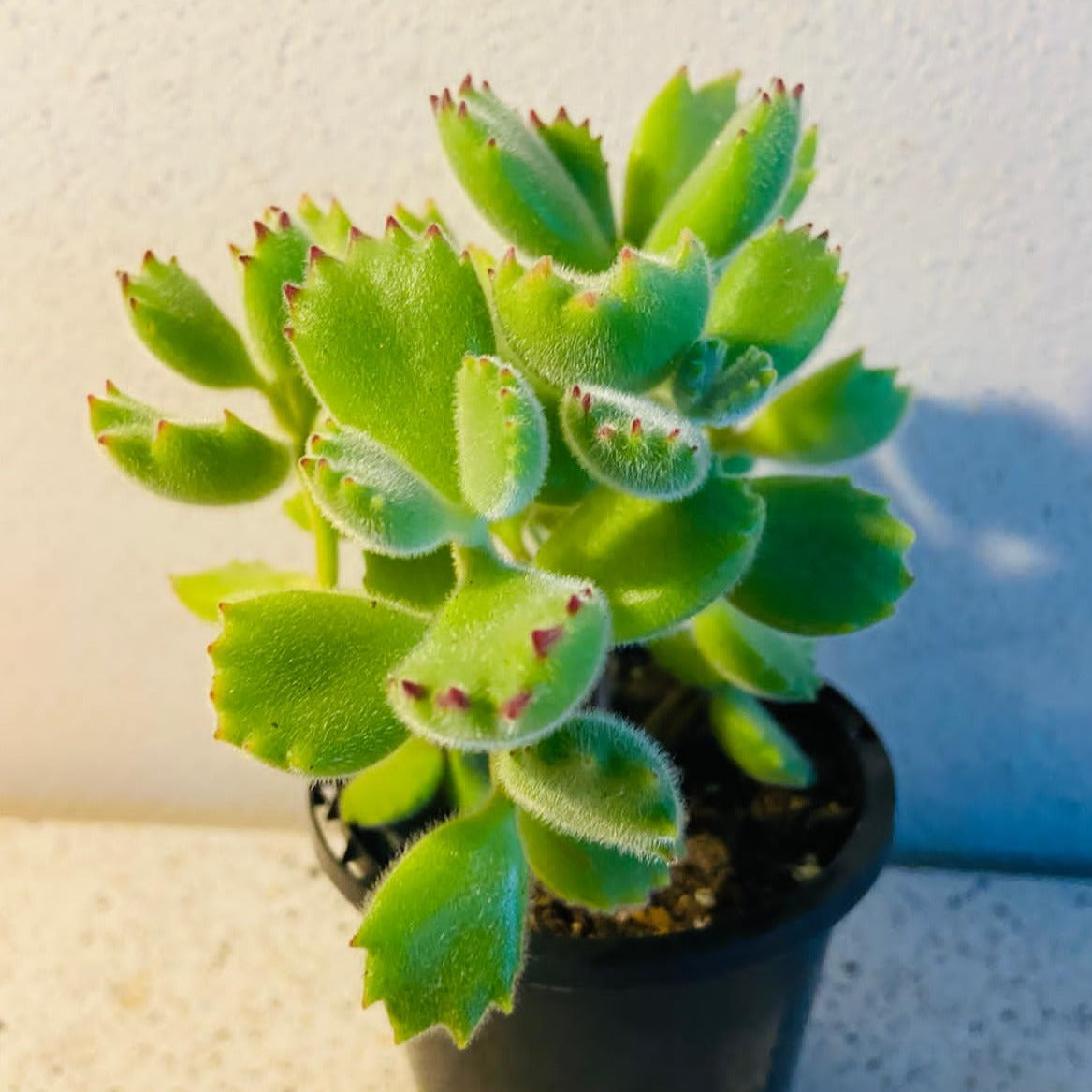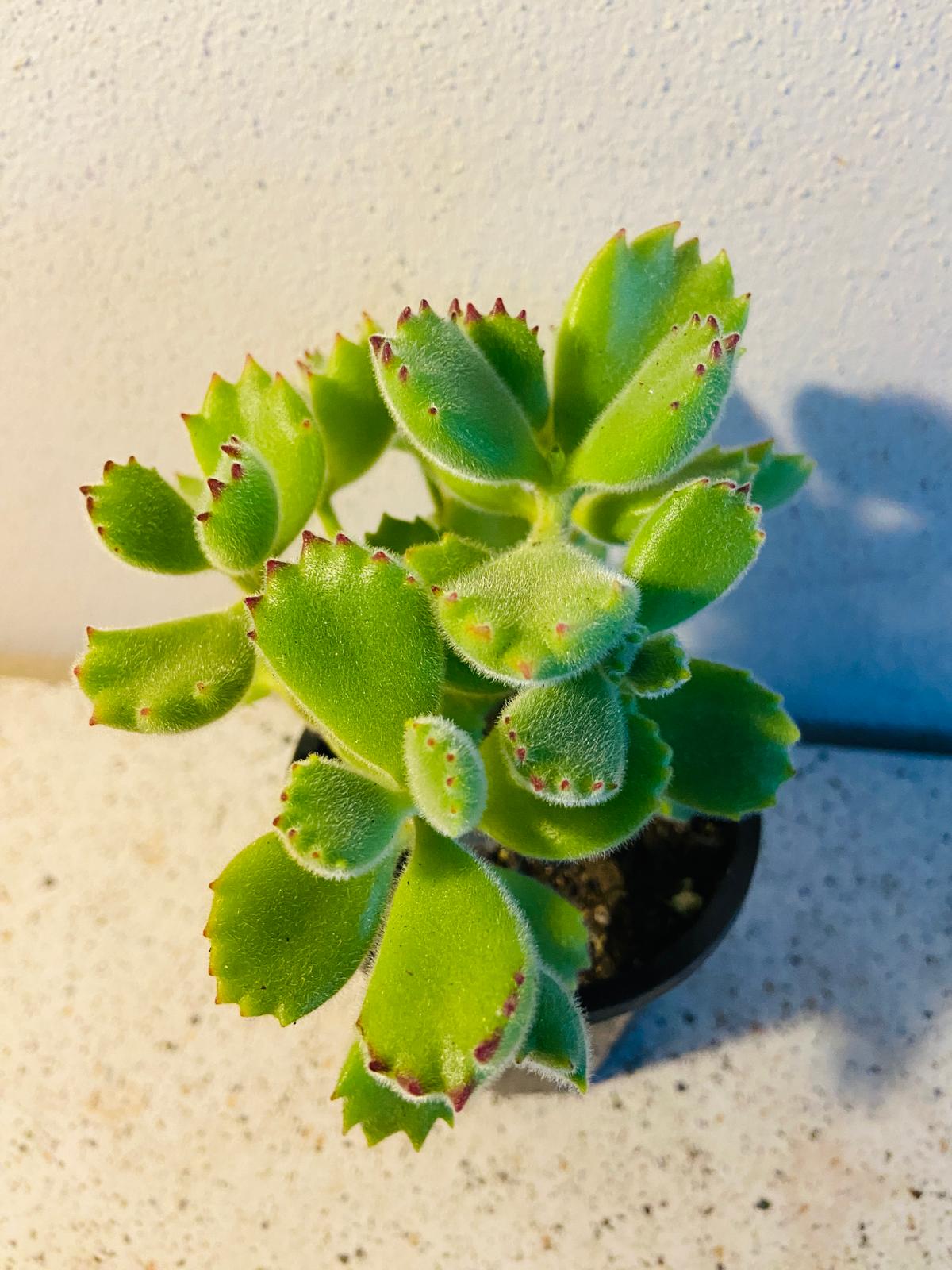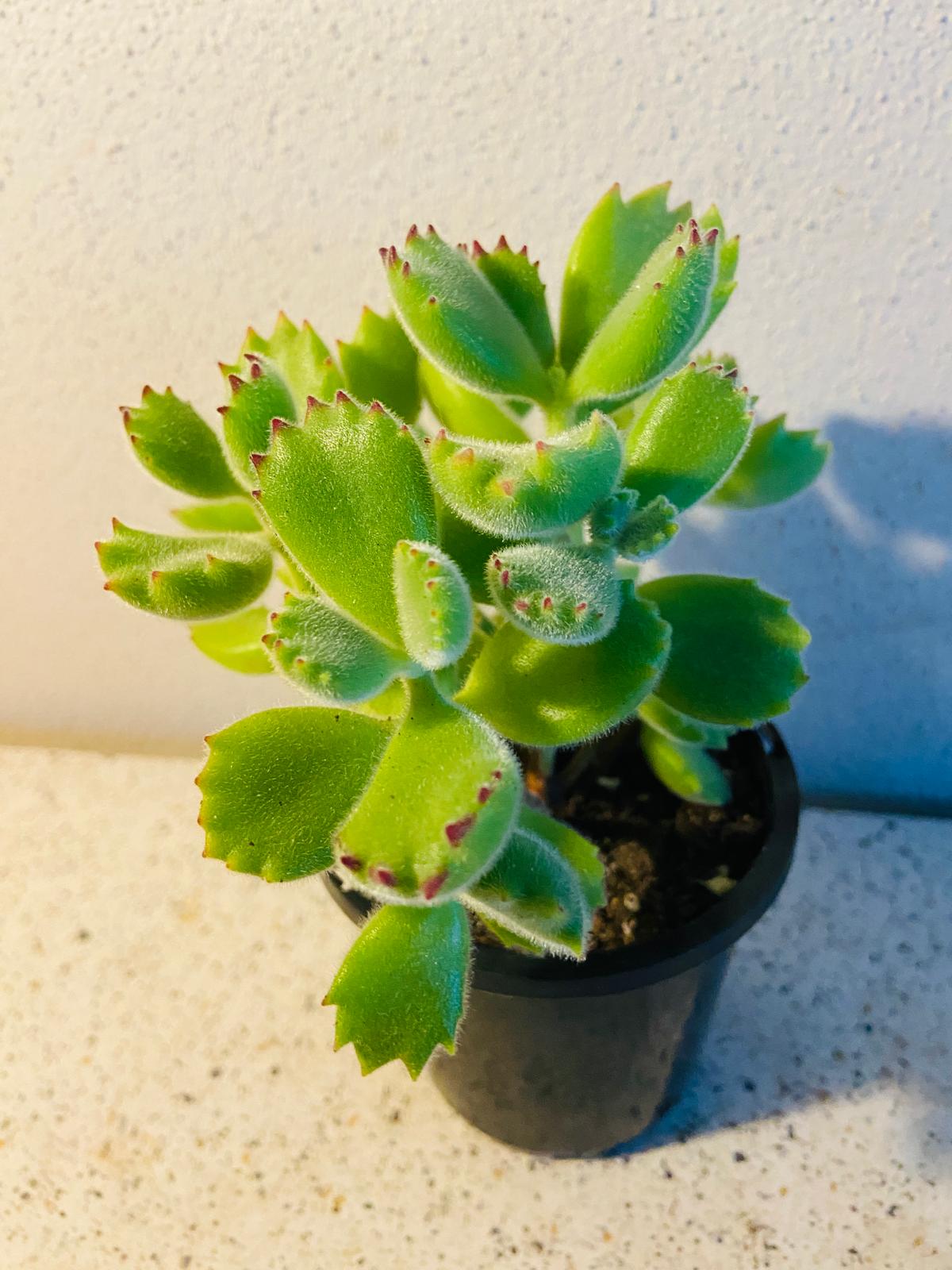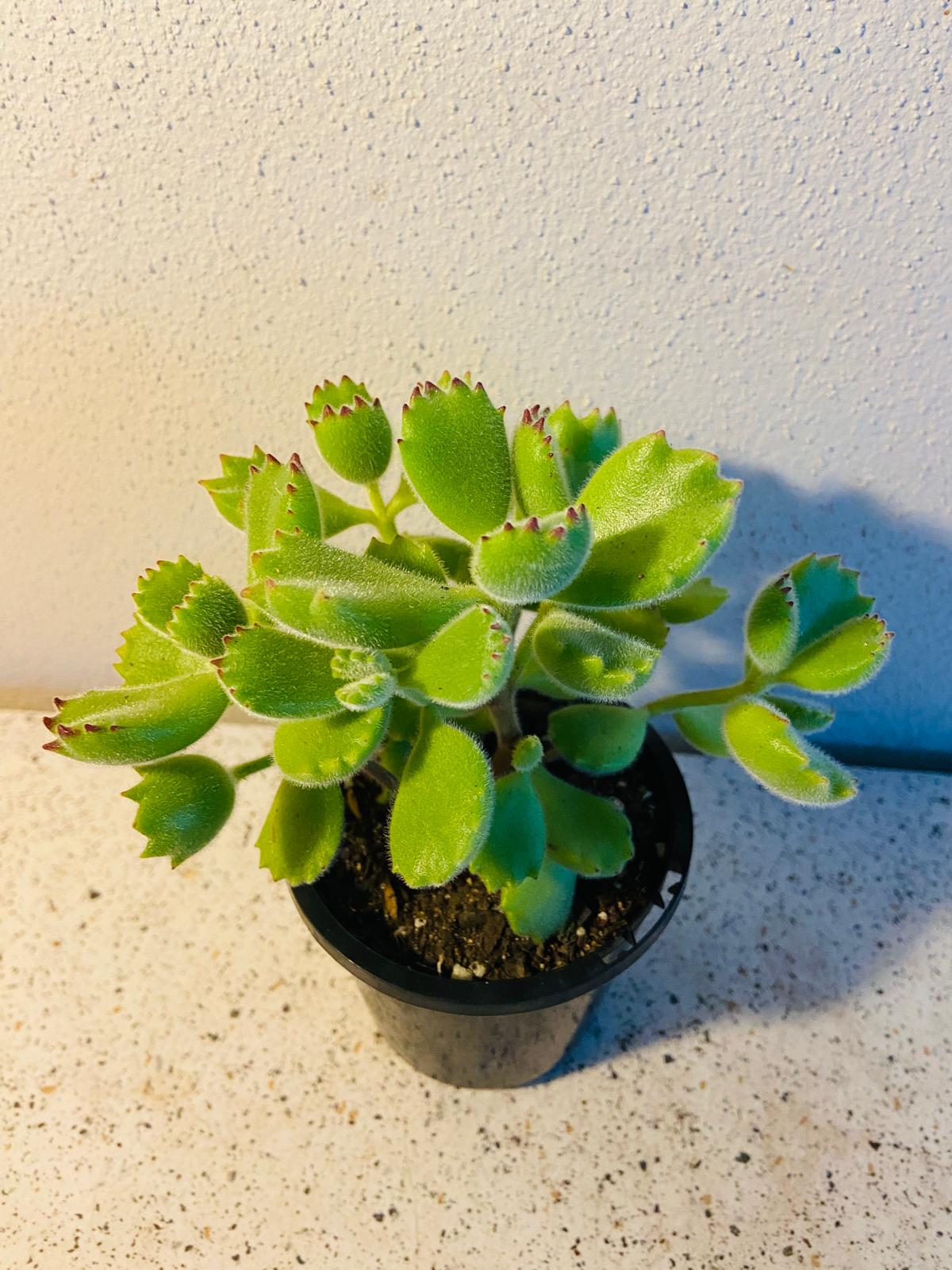Cotyledon Bear's Paw
Cotyledon Bear's Paw
You must add at least of this product.
Couldn't load pickup availability
Cotyledon tomentosa – Bear's Paw Succulent | Fuzzy, Sculptural, Low-Maintenance
Add a playful and textured touch to your succulent collection with Cotyledon tomentosa, commonly known as the Bear's Paw. Native to South Africa, this charming succulent is prized for its fuzzy, velvety leaves and unique, claw-like tips that resemble a bear’s paw. Slow-growing and easy to care for, it’s perfect for pots, rockeries, succulent arrangements, or indoor displays.
Key Features
-
Distinctive Fuzzy Leaves: Thick, obovate leaves covered in fine white fuzz
-
Unique Leaf Tips: Lobed tips that resemble a bear’s paw; may turn reddish in bright sunlight
-
Compact Clumping Habit: Slow-growing, branching shrub forming dense, attractive clusters
-
Seasonal Blooms: Produces small bell-shaped flowers in orange or reddish-orange in spring/summer
-
Low-Maintenance & Hardy: Ideal for beginner and seasoned succulent collectors
Care Instructions
-
Light: Bright, indirect sunlight; tolerates some morning sun but protect from intense afternoon sun
-
Water: Use soak-and-dry method; water only when soil is fully dry, especially during winter dormancy
-
Soil: Well-draining succulent or cactus mix; add perlite or coarse sand for improved drainage
-
Temperature: Prefers 18–27°C (65–80°F); protect from frost and freezing temperatures
-
Humidity: Low to average
-
Fertilizer: Diluted, balanced succulent fertilizer in spring/summer; avoid winter fertilization
-
Potting & Repotting: Repot every 2–3 years in slightly larger pots with drainage holes
-
Propagation: From leaf or stem cuttings; allow cuttings to callus before planting
Bring home Cotyledon tomentosa for a sculptural, whimsical addition to your plant collection. Its soft, fuzzy foliage, unique paw-shaped leaves, and charming seasonal blooms make it a standout succulent for indoor or outdoor spaces.
The succulent plant housed in the red pot comes in a 80mm diameter container. While the image provides a representative depiction of what you will receive, but may vary slightly because no two succulents are the same.
Please note — NT, TAS, WA customers: please contact us before placing your order due to additional quarantine charges associated with these locations.
View Shipping options
Share







